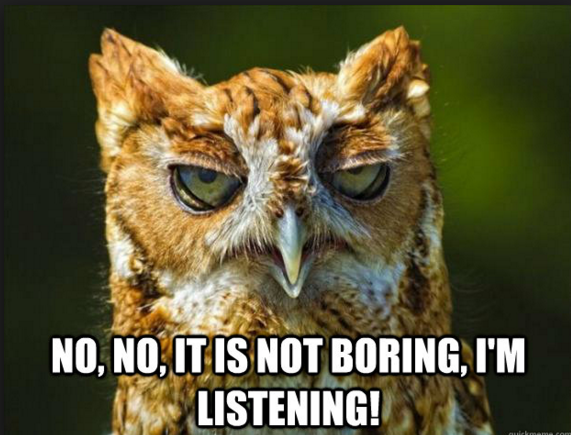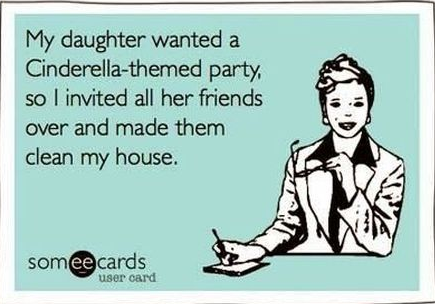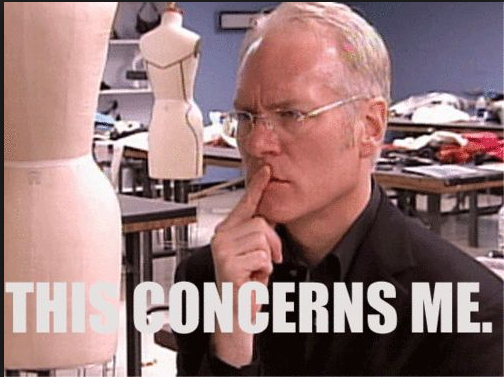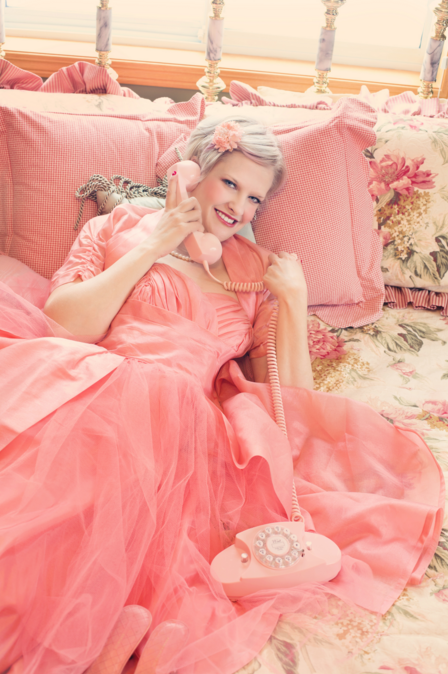
It’s me, Cait Reynolds, and I’m going to be brutal here. You’ve been warned. But, honestly, I get a little stabby when I encounter a Mary Sue in a book. Mary Sues are death to fiction, yet they’re more common than head lice in Kindergarten (and about as desirable). For the sake of time today, we will focus on the most common Mary Sue peeve…the Mary Sue Shopping Spree.
What is a Mary Sue Shopping Spree?
It’s wish fulfillment at its worst.
First of all, for anyone who is unfamiliar with the term “Mary Sue,” the best definition is here at Urban Dictionary. But, for our shorthand use, a Mary Sue is an impossibly perfect character.
She’s beautiful (flaming red hair and emerald eyes, for example) and smart (better grades than Hermione Granger but never seems to be in the library). A Mary Sue falls in love with the hero/hero falls in love with her early, often and easily.
What IS a “Mary Sue”?

There are all kinds of Mary Sue’s–no genre is safe. Here’s just a sample:
- Victim Sue! with an impossible streak of bad luck/tragedy/knack for getting kidnapped and/or stalked.
- Warrior Sue! who has a mouth like a sailor, throws a mean punch, fights like Lara Croft and Bruce Lee’s love child (and probably has a lineage about as weird), and still looks amazing in a ball gown (but doesn’t want to be taken for a sissy girl!).
- Magic Sue! with similarities to Warrior Sue in that she has unheard of powers that usually get her into trouble (see Victim Sue) until she learns to control them, and then with a wave of her (slender, delicate) hand, saves the day without chipping a nail.
- Misfit Sue who is the proverbial ugly duckling, except all she needs really is some good conditioner, a fairy godmother, and a gift certificate to Forever21 in order to turn into the hottie that suddenly attracts all the guys.
There are so many issues with Mary Sues, but the single largest Mary Sue staple is—GROANS—the shopping spree.

This is the point in a story where everything grinds to a halt so the heroine can get ready for the ball/date/wedding/party/sacred mage ceremony, etc.
You know the kind of scene I’m talking about…but in case you don’t, let’s look at an example.
Mary Sue Goes to the Ball

Let’s use my favorite Mary Sue stand-in Seraphina to illustrate. Seraphina has had a hard life as a disinherited princess living in hiding in a faux medieval village and secretly training to use her immense magical powers to take back the throne and rid the land of evil.
She finds a way to infiltrate the castle by sneaking into a fancy ball that the king is giving. But, in order to blend in with the crowd, she will need…a ballgown.
What comes next is any combination of the following descriptions:
- Shopping or gathering all the necessary clothing
- Hairstyles
- Dresses
- Jewelry, and other accessories
- Makeup (!)
But…it’s not just descriptions. We, the readers, are subjected to descriptions in excruciating detail.

Also, every character involved in the scene is kind, excited, happy to help with the preparations, and relentlessly cheery. Apparently, there can be no conflict in the dressing room (unless it’s Seraphina objecting to the ‘girly pink’ or ‘frilly’ dress, thereby making a statement of profound strength of character and independence).
We read about sweetheart necklines, bias cuts, skirts that gently flare out, lace gloves, sleeves that come to just above the wrist, silver embroidery patterns of magical runes (or flowers, whatever).
Gritting our teeth, we skim over the part about hair that is piled high with loose curls falling softly around her face, or braids intricately woven with pearls and jeweled flower pins with just a few errant and untamable curls falling softly around her face.
The author beats us over the head with the fact that she only wears a little bit of eyeshadow and lip gloss (WTH? Do they even have lip gloss in faux medieval realms?) because she doesn’t really need any makeup to enhance her natural beauty.
That strangling noise?
It’s us. The readers. Being garroted….
With the heroine’s delicate chain complete with cheesy symbolic pendant (dragon, rose, snake, rune, whatever) because that’s not a dead giveaway to the bad guy(s).
Hey, doesn’t that girl with the opal-eyed dragon pendant that looks like the one that belonged to Queen Margitte look a lot like dead Queen Margitte?.
Also, a general rule of style is to match the formality of jewelry to the formality of the outfit. One doesn’t wear parure with buckskin breeches, and conversely, charm necklaces are not to be worn with ballgowns. (Yes, I just channeled my inner Tim Gunn.)

Let’s not forget how Seraphina chooses sensible low-heeled slippers as opposed to the…um…lucite platform heels offered by the empty-headed ninnies who only care about boys and clothes.
Because taking time out from pace, tension, plot, and relevance to talk about dressing a character totally doesn’t paint the author as having the emotional range of a fifteen-year-old.
All joking aside, let’s look a little closer at WHY the Mary Sue Shopping Spree is so problematic.
Go Ahead. Sue Me!

It’s not really Seraphina’s fault that the author wants to play out a Cinderella fantasy. Unfortunately, this violates one of KLamb’s most basic rules: NEVER MAKE IT EASY FOR THE CHARACTERS!
Nobody wants to read about everybody being happy, getting along, and things going their way. Can you say, “Snooze-Fest?”
Can you imagine Harry Potter if he’d grown up with his parents alive, been BFFs with Draco Malfoy, and figured out how to vanquish Voldemort without leaving the comfort of Hogwarts?
No, you can’t because no reader would have made it past page TEN. Harry Potter would have been another forgettable character in yet another bad book.
But he isn’t. Why? Harry Potter is legendary because of CONFLICT and seemingly insurmountable odds. Not everything slipping in place as if his life is coated in Teflon.
The same goes for the Cinderella moment. Let’s look at why.
Slumber Party or Plot Point?

Getting-ready-for-the-party scenes must obey the rules of fiction just like all the other scenes. Where is the conflict that drives the story? What is the relevance of the getting-ready-for-the-ball scene? Is there any character growth? Are there any obstacles?
If the answer is no, then we need to think twice about putting in a scene like this.
Hemming and Hawing

Set aside the sins of over-descriptiveness for a moment. Instead, look at the science of how we read and process the written word. In general, we read at about 200-400 words per minute (cool, non? Read this for more!).
That means that careful description is critical to the FLOW of a reader’s understanding and visualization. If we STALL the flow by making a reader stop and try to visualize EXACTLY what a character is wearing (I’m looking at you, hem lengths and embroidered bodices!), we risk losing the reader’s immersion in our world.
Anachronism Alert!
The Mary Sue Shopping Spree also showcases when an author hasn’t bothered to do his or her homework with either historical research or fantasy world-building (LIP GLOSS???). With historical, this is easily solved with just a modicum of research–and luckily for you, I’m obsessed with historical fashion.
Check me out on Pinterest for a decade-by-decade breakdown of fashion across the centuries (and a WHOLE lot more!).
With fantasy, there’s still no excuse for not considering things like climate, culture, how easy it is to get your hands on expensive clothing, etc. Thinking it through isn’t hard. We just have to do it.
Get Seraphina a Personal Shopper and Move on
All of this isn’t to say that we can’t have a makeover scene now and then. There’s just a better way to do it. Here’s how.
Relevance
Makeover scenes must be relevant to the plot and/or character. For example in my book Downcast, I use a literal shopping spree to reveal Stephanie’s growth as a character, in beginning to make her own choices and tap into her own confidence.
More than that, though, Stephanie’s shopping spree sets up a MAJOR conflict.
In fact, it’s one of the biggest pivot points in the whole plot. Could I have used another ploy to get me there? Sure. But, a teenage girl going to the mall for her 18th birthday is both plausible and appropriate for the context (and the YA genre).
If we’re going to use the shopping spree–be it contemporary, ye olde, or beware hippogriffs! style–always ask three things:
- Is it relevant? Does it move the plot forward?
- Will it offer any new clues/information or set the characters up for conflict?
- Does it reveal and/or conceal anything important about the characters (from each other, the reader, etc.)?
If we can answer yes to all three, then we move to the next step, which is…
Bippity-Boppity BORING!

Fairy godmothers way overrated. Why not have the wicked step-sister be the one to have to help get Cinderella ready for the ball? Will the Wal-Mart generic brand wand be up to the challenge of whipping up a ballgown?
Is there a crack in one of the glass slippers? Does the color blue make her look jaundiced? Is anyone willing to tell her that?
What if she really, really wants to wear blue, but the only color the Wal-Mart wand can produce is pink? She has to wear the pink dress. If you transform a pumpkin into a carriage, does it smell like pumpkin on the inside? Is that a good thing? Are the mice unionized?
You get the idea.
The point is the getting-ready-for-the-ball scene should be FULL of delicious difficulties and confectionary conflict. Remember KLamb’s rule: MAKE IT WORSE UNTIL YOU MAKE IT WEIRD. NOTHING COMES EASILY…EVER!
If everyone is happy and excited to help Seraphina get ready for the ball…meh.
What’s the point?
What makes me (reader) want to turn the page? But, if Lady Jordan slips itching powder down Seraphina’s chemise, or the fairy godmother makes an unthinking remark about how to fix the way Seraphina looks a bit puffy…well, NOW we have something to work with!
Give Up Control

The reader will never, ever, ever be able to picture a gown exactly the way we see it in our mind’s eye. Ever. You can tell me all you want about length and fabric and cut and jewelry. However, it’ll either be too much detail, and I’ll lose track of all of the bits I’m supposed to remember, OR, I will just skim and skip until the plot resumes.
Seriously, we need to give up the idea that our descriptions will ever create an exact picture for the reader. Descriptions are meant to be evocative. They also…yeah, you know what I’m going to say here…wait for it…have to be RELEVANT.
And, yes, here’s another handy checklist to work through to determine if a description is relevant:
- Is there something unique, interesting, or important about the dress, jewelry, etc.?
- What is truly different about these clothes for the character and her life experience?
- Are there smells, textures, or sounds (like bracelets clinking) that are unusually pleasurable or uncomfortable?
For example, for a fantasy genre scene, I might describe Seraphina’s reaction to her ball gown like this:
Her first instinct was to decline the gown. The fine silk and rare lapis-dyed color screamed the kind of wealth she had barely ever encountered, let alone would feel comfortable impersonating. She didn’t dare touch it, afraid that the calluses on her fingers would catch and snag the delicate fabric.
Still, she drew closer, fascinated by the pattern of dragons in mid-flight picked out in silver thread around the hem. When Lady Jordan gave the skirts an expert–if impatient–flick to smooth the creases, the embroidered dragons looked as if they were truly in flight.
A brisk ‘tsk’ from Lady Jordan jolted Seraphina from the daze of admiration, and she shrank from the disapproving moue on the older woman’s lips.
I would probably also make the dragons mean something or be symbolic in some way, though I might not have Lady Jordan inform Seraphina of that because…well, she doesn’t really like the girl or want to help her, and if she must dress a sow’s ear in a silk purse, then at least she will get some entertainment out of it later when the girl stumbles over the etiquette of the significance of the embroidery.
Because being mean to my characters is what makes it fun for my readers.
And, it has nothing to do with being a sociopath. AT ALL.
Next up…Getting Stabby About the Taylors and Shifters
If you’ve read any of my blog posts here, you know that Taylor is Seraphina’s male counterpart. And, Taylor can often be found in romance novels–especially shifter romances. If you think I’m prickly (and hilarious–admit it, you giggled at this post!) about Mary Sue shopping sprees, just watch me rip into shifters…and how to make them better.
You can even watch me do it LIVE this Friday!

Instructor: Cait Reynolds
Price: $45.00 USD
Where: W.A.N.A. Digital Classroom
Date: Friday, November 3, 2017. 7:00-9:00 p.m. EST
Shifter romance is one of the hottest genres in publishing right now. It’s easy, right? You just take a hot guy and have him morph into a wolf…or bear…or…panther…or…
Well, you and the thousands of other shifter romance writers. So, how are readers going to tell your lusty wolf boys apart from another author’s lusty wolf boys? Sure, you can invent clan/pack rules and give your shifters certain features or restrictions.
But, if you want to create unforgettable shifters that will have readers coming back for more, you need to shift your world-building into high gear. (See what I did there with the play on words with ‘shift’? Ha! I’m so funny.)
This class will help you create richer shifter ‘cultures’ by showing you how to:
- Construct the history of your shifters, and by history, I mean real history
- Use science (even if you’re not a science person) to add delicious bits of plausibility to your shifters
- Catch world-building details that create giant gaps in logic that can distract the reader from your story
- Develop stronger characters by giving them a richer, fuller historical, scientific, and world-building context
- Drive action and plot twists in unexpected ways using expanded shifter world-building
- Amp up the romantic and sexual tension using the history and science of your shifters
We are now offering ADVANCED LEVELS for this class. Extra help from an EXPERT.
In a world of a gazillion forgettable shifters, let Cait help you take your shifter to a WHOLE NEW LEVEL.
Shifter GOLD
You get the class (recording included in price) with Cait plus one hour of personalized one-on-one consulting regarding YOUR story.
Shifter PLATINUM
You get the class (recording included in price) with Cait plus two hours of personalized one-on-one consulting regarding YOUR story and bonus worksheets. These worksheets will efficiently guide you through in-depth world-building and research, providing you with consistency for your writing and an excellent reference/style sheet for your editor and proofreader.
Other upcoming WANA classes!
[abcf-grid-gallery-custom-links id=”22231″]








14 comments
3 pings
Skip to comment form
Very interesting Post, Cait! I’m looking forward to checking out the items you’ve posted on Pinterest! Will see you at Class Friday evening!
Author
Thank you, Mary! See you tomorrow night!
Y’know, I was always taught that the term Mary Sue refers to a character who’s basically the idealized version of the author.
Author
I believe that is how it started – author wish fulfillment, but over the years, the term has grown to encompass many different meanings in popular culture 🙂
Totally agree with you.
Along with the agonizing description of dresses, many romance authors could also do away with the agonizing description of how beautiful the heroine is. Seriously. She’s pretty. I get it.
Author
Right? Or how handsome the hero is. *facepalm*
Thanks for a new word I’ll likely *never* be able to use: parure.
Doesn’t even pass the spell check, LOL.
Thanks for sharing; I just trimmed probably 500 words of dress description, and that was before I read this! Back to look the ms over again.
Author
Never underestimate your ability to find an occasion to use the word ‘parure!’ In fact, I am throwing it down as a challenge! Use parure in conversation at least once by the end of this week and report back :p
This is probably one beeeg reason why I am So Over Romance these days: WAY the heck too many Mary Sue heroines and particularly their I-woke-up-this-way natural beauty.
Sure, there’s a good bit of description of clothing in The Hunger Games novels, but it works for a couple of reasons. A, Katniss would rather be wearing her dad’s hunting jacket, and readers already know that. B, the clothes tend to be symbolic and/or related to the plot. C, she has conflicting feelings about wearing the described clothing because it usually means she has some ordeal or other coming up within a few pages. There’s a way to do clothing description, but you’re absolutely right that Cinderella Goes to the Ball is definitely not the way.
(But dang, I still want that salmon-pink satin/tulle dress. I didn’t have a THING to wear this Halloween.)
Author
Exactly! It’s not a crime to offer a brief description of what a character is wearing – especially if it’s relevant. I mean, we want the readers to be able to picture the characters in their heads. If I say a character is wearing grungy jeans and an old grey sweater, that invites you to think of the days when all you want to wear is grungy jeans and an old grey sweater. It helps the reader identify with the mood of the character.
The Hunger Games is a great example of how fashion and clothing is used as a scaffolding for conveying the emotions, class systems, scarcity, and psychology of characters.
Also, hand off the salmon-pink satin/tulle dress! It’s MINE! LOL
Is this a shopping spree or a shopping *list* of the writer missed? 🙂
That spree really is writing with only one goal, Mary Sue wish-fulfillment at its most indulgent. Of course it’s easy to let it slip in. And you do a superb job of showing the elements a scene should have had instead– real plot relevance, or conflict in the moment, or at least keeping control over the details’ length (and their accuracy for the world!). A scene should serve the story, the story isn’t there to gush out the scene.
I will say this: shopping and dressing up sounds like it *could* have a place in the drama. They could be a “hope spot,” that shows off that our heroine has finally gotten a break plus has a chance to move forward even more with the plot. (A very male version might the “lock and load sequence” of strapping on guns for a fight ahead.) But, we ought to remember, it’s a spot *between* the scenes where something happens, or else there’s something specific flaring up right then.
A fantasy shopping spree might be a nice place to live. But in a story, we only want to visit there, and get ON with it.
My first book, the heroine is a bit of a Mary Sue. I sometimes think about going back and ‘fixing’ it but some people really love the book so I leave it alone.
I definitely won’t make that mistake again, though. Lesson learned. This is a great article to refer back to so I can suss out the less obvious versions.
I’m late reading this; I took the weekend off to just relax. Then I ended up reading the article to my husband because we both grew up writing our own Mary Sue/Marty-Stu characters when we were learning to do fiction. Captain Kirk’s adorable, orphaned, adopted daughter was mine. Obnoxious, beautiful, and bright enough to be an engineer on the Enterprise when she was 15, and even used to hang upside down in the Jefferies Tube to fix things, her knee-length white/blonde hair cascading out of the tube….yeah. I know, horrible.
I got to going over my second book’s shopping trip as you talked about shopping, making sure I didn’t screw it up. I think I managed to make it different enough to pass the “weird” test. Great articles in this blog make me do that all the time. 1900 woman dropped into 2005, taken shopping by his personal assistant to the big shopping center (Galleria in Houston), treated to Neiman Marcus clothing (the guy she’s seeing is exceedingly rich), then taken to Victoria’s Secret (oh no, I am NOT that kind of woman…). I think I did okay with it.
My only complaint: damn it, I just named a great character Seraphina! Before I read your blog. She’s better than yours (of course) and will be fun to write. And no, I’m going to keep the name.
Wonderful blog entry as usual. Thanks!
I hate, hate, hate, hate long azz descriptions about clothing that do nothing. Lets not even get started on long boring descriptions inside of houres complete with every pillar, wall, picture and the doors in older fantasy books. There’s this one book series my mother loves so she had me read it. I couldn’t make it past chapter three as the heroine wouldn’t shut up about the drapes.
When I first started writing my goal was and still is a: If I can’t buy a book just like I’ve always wanted I’ll make one.
Little did she know how hard (and fun) this would be… XD Mr. King is right we bleed for this.
[…] https://authorkristenlamb.com/2017/11/mary-sue-shopping-spree/ Don’t make your characters perfect! […]
[…] Wanna see the harpy pop out again? Give me a servant girl with more wardrobe changes than a Lady Gaga concert. Or the poor farming family whose feisty, independent daughter is always buying and reading books. Or the Regency version of the Mary Sue Shopping Spree. […]
[…] …also, it helps keep a lid on irrelevant side-trips like the Mary Sue Shopping Spree; […]